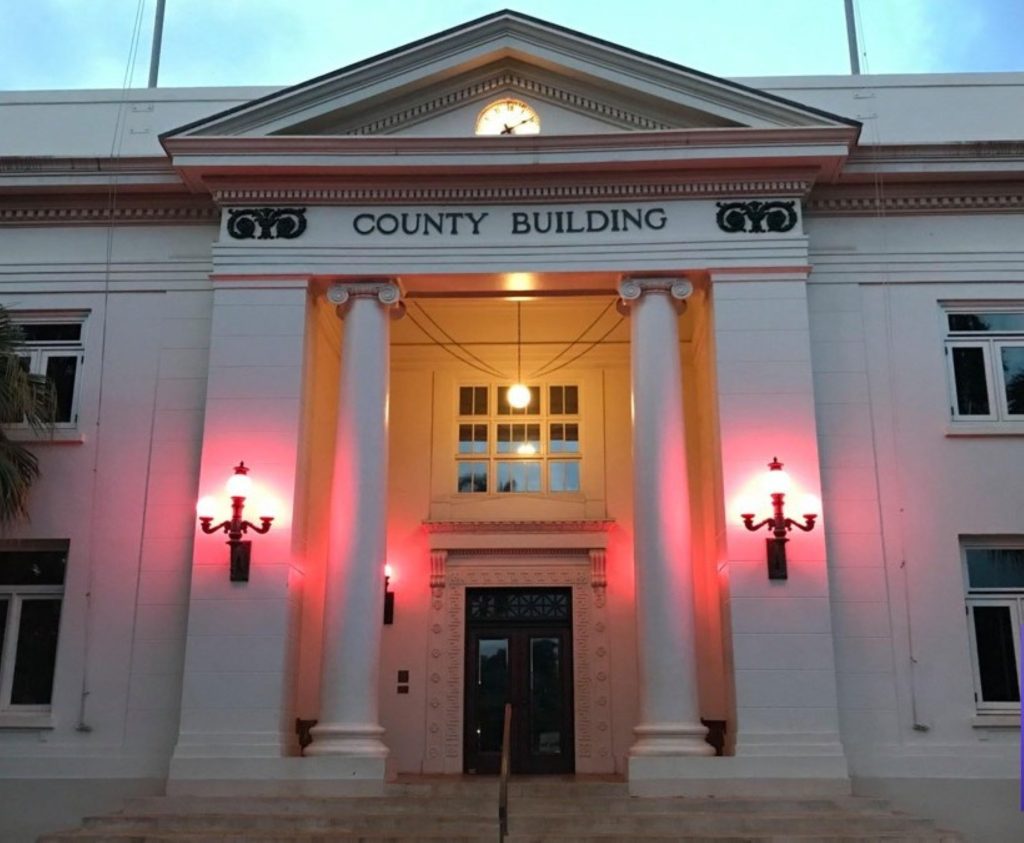‘Think pink’: Kaua‘i community urged to come together in solidarity during Breast Cancer Awareness Month
Kaua‘i Committee on the Status of Women encourages survivors, supporters and the community to come together in solidarity during Breast Cancer Awareness Month 2025, which began Oct. 1.
The committee — in partnership with Zonta Club of Kaua‘i — beseeches everyone throughout the month to don pink, which symbolizes femininity, hope and compassion around the world.

Community members can also stop by a pop-up tent hosted by the two organizations from 4 to 5 p.m. Oct. 6 in front of Kaua‘i Community College, where they can enjoy snacks, giveaways and resources provided by the American Cancer Society.
“By standing together, we can show support, strengthen connections and remind one another that no one faces breast cancer alone,” said Kaua‘i County Office of Boards and Commissions in an announcement about this year’s observance of Breast Cancer Awareness Month.
Kaua‘i Committee on the Status of Women ex-officio member Edith Ignacio-Neumiller said self-exams and mammograms are not enough to keep breast cancer at bay. The more information you have, the better.
“It is always good to research current facts and to reach out to the American Cancer Society,” said Ignacio-Neumiller in the announcement. “Information about breast cancer can save your life — or the life of a loved one.”
Awareness is the first step, followed by action, added Zonta Club of Kaua‘i President Regina Carvalho.
“October reminds us that no one fights alone,” said Carvalho in the announcement. “Our strength multiplies when we stand together. … Early detection — through self-exams, mammograms and family conversations — can save lives.”
Here are 10 facts about breast cancer from the Adventist Health & Breast Cancer Research Foundation:
- BREAST CANCER IS COMMON. It is the most common cancer among American women after skin cancer. One in 8 women will develop breast cancer in their lifetime.
- ETHNICITY MATTERS. Rates are highest among white and African American women. Asian American and Pacific Islander women — once considered lower risk — are now seeing the fastest-rising rates.
- IT’S NOT ALWAYS A LUMP. Warning signs include swelling, skin changes, nipple discharge or retraction.
- SYMPTOMS CAN APPEAR ELSEWHERE OTHER THAN THE BREAST. Swollen lymph nodes near the collarbone or underarm can be early indicators.
- FAMILY HISTORY ISN’T EVERYTHING. Radiation therapy before age 30 can increase risk.
- NO RISK FACTORS? STILL POSSIBLE. Most women diagnosed have no known risk factors or family history.
- SCREENING IS TAILORED. High-risk women can start annual magnetic resonance imaging and mammograms at age 30. Average-risk women should begin yearly mammograms at age 45.
- MAMMOGRAMS DETECT EARLY. Screenings can reveal changes years before symptoms appear.
- EARLY DETECTION SAVES LIVES. Women screened regularly are more likely to avoid aggressive treatment and survive.
- SURVIVAL RATES ARE IMPROVING. Breast cancer deaths since 1989 have declined nearly 40% because of better detection and treatment.
The historic County Building in Līhuʻe is once again illuminated in pink this October in honor breast cancer survivors.
Workplaces, community groups and local sports teams, including the Kaua‘i Pop Warner Football League and football officials, will also wear pink in solidarity.
“This month, as we honor fighters, survivors and those we have lost, let us shine a light on unity and resilience,” Carvalho said.
Kaua‘i County Office of Boards and Commissions urges the community to “think pink” by coming together, acting early, becoming more aware, gaining more knowledge and supporting every fighter, survivor and family touched by breast cancer.



